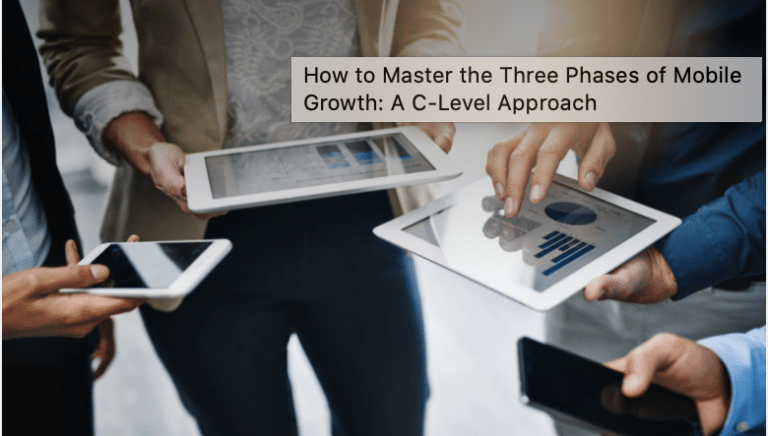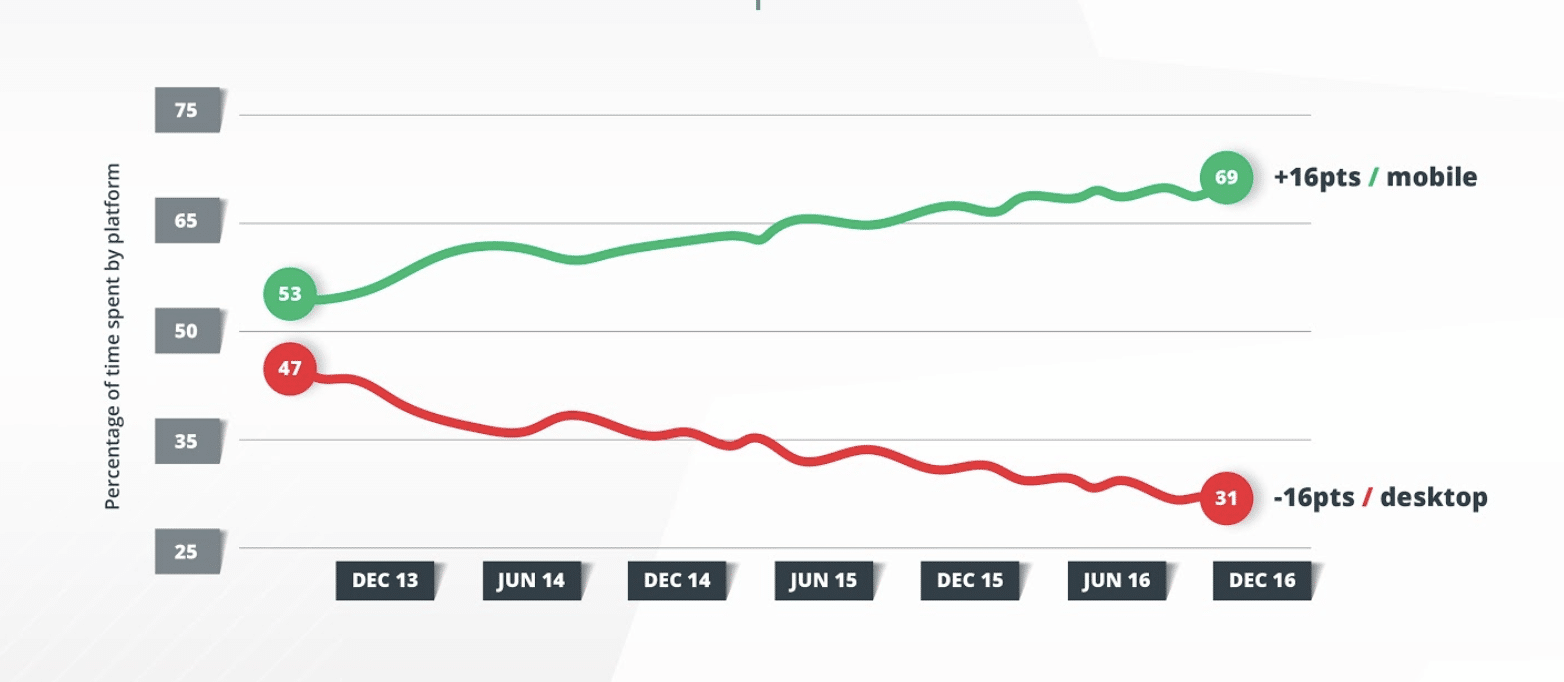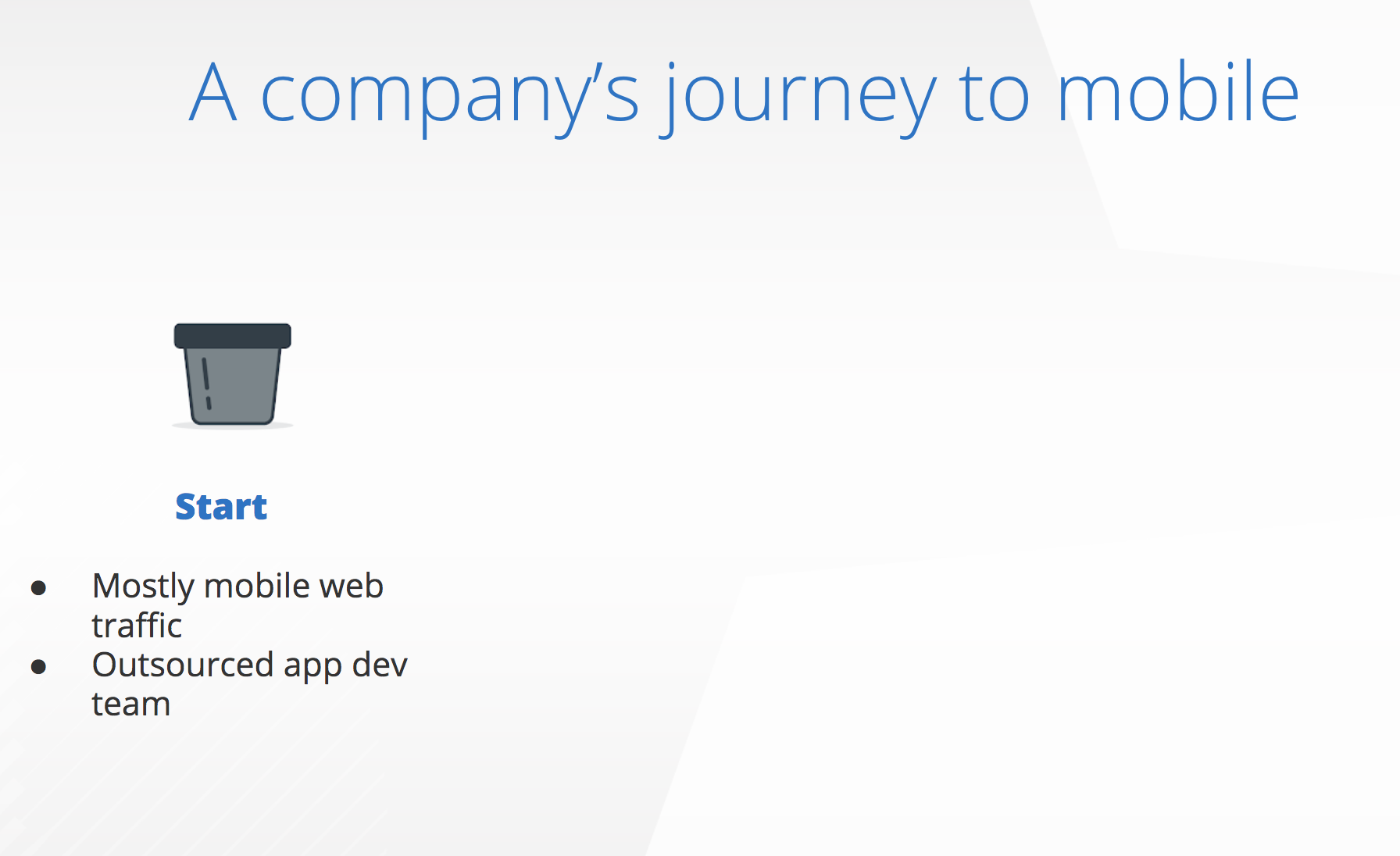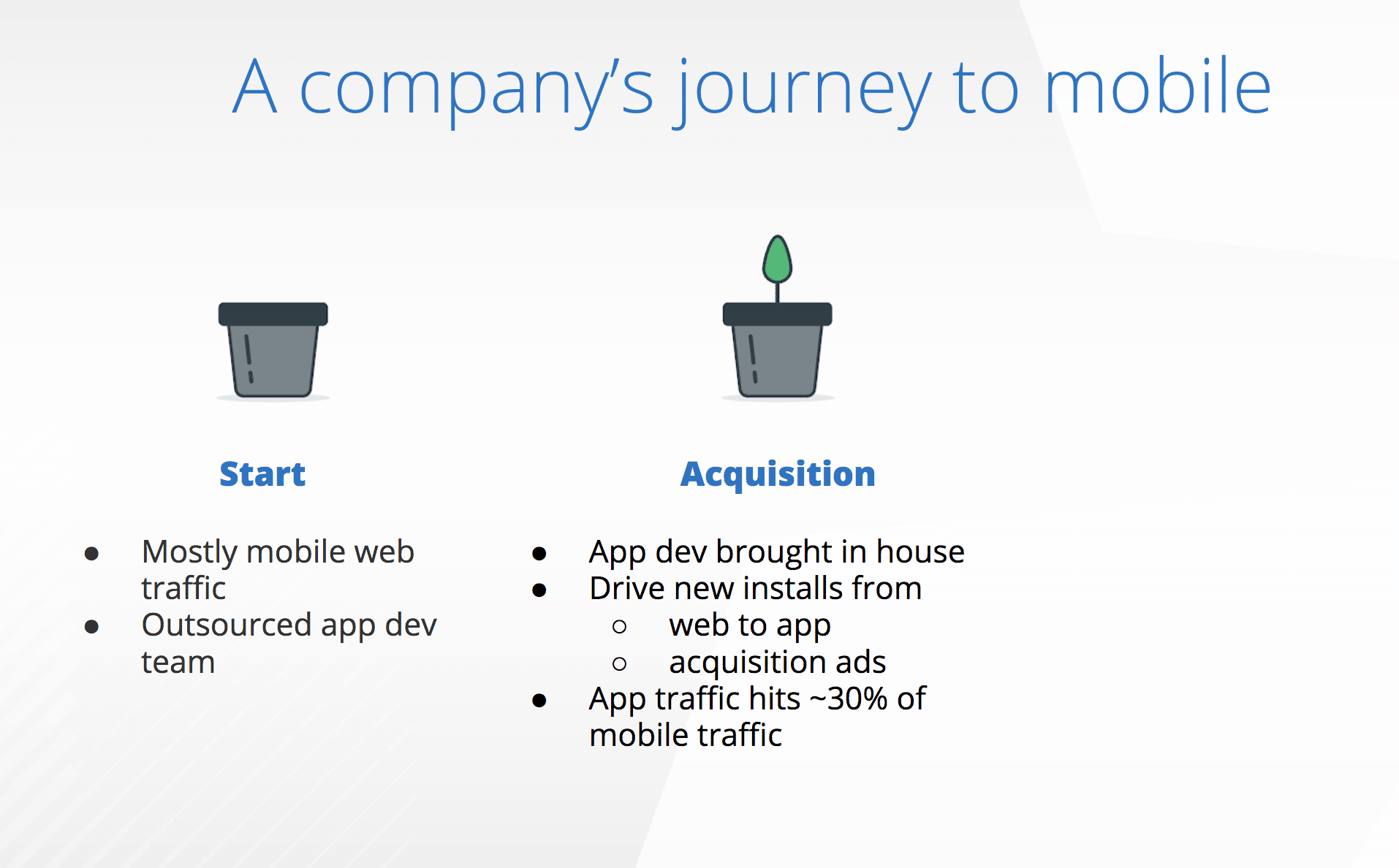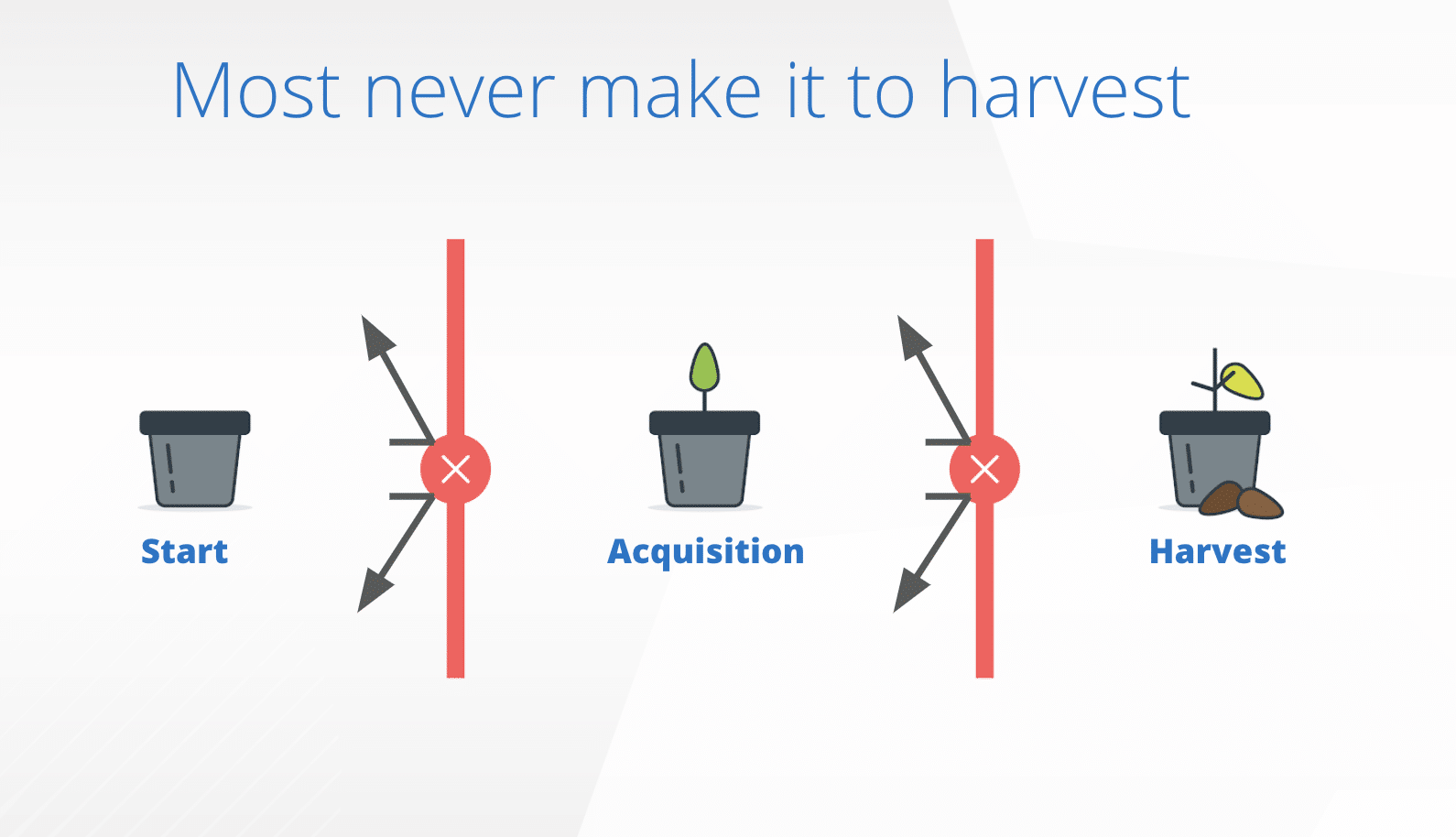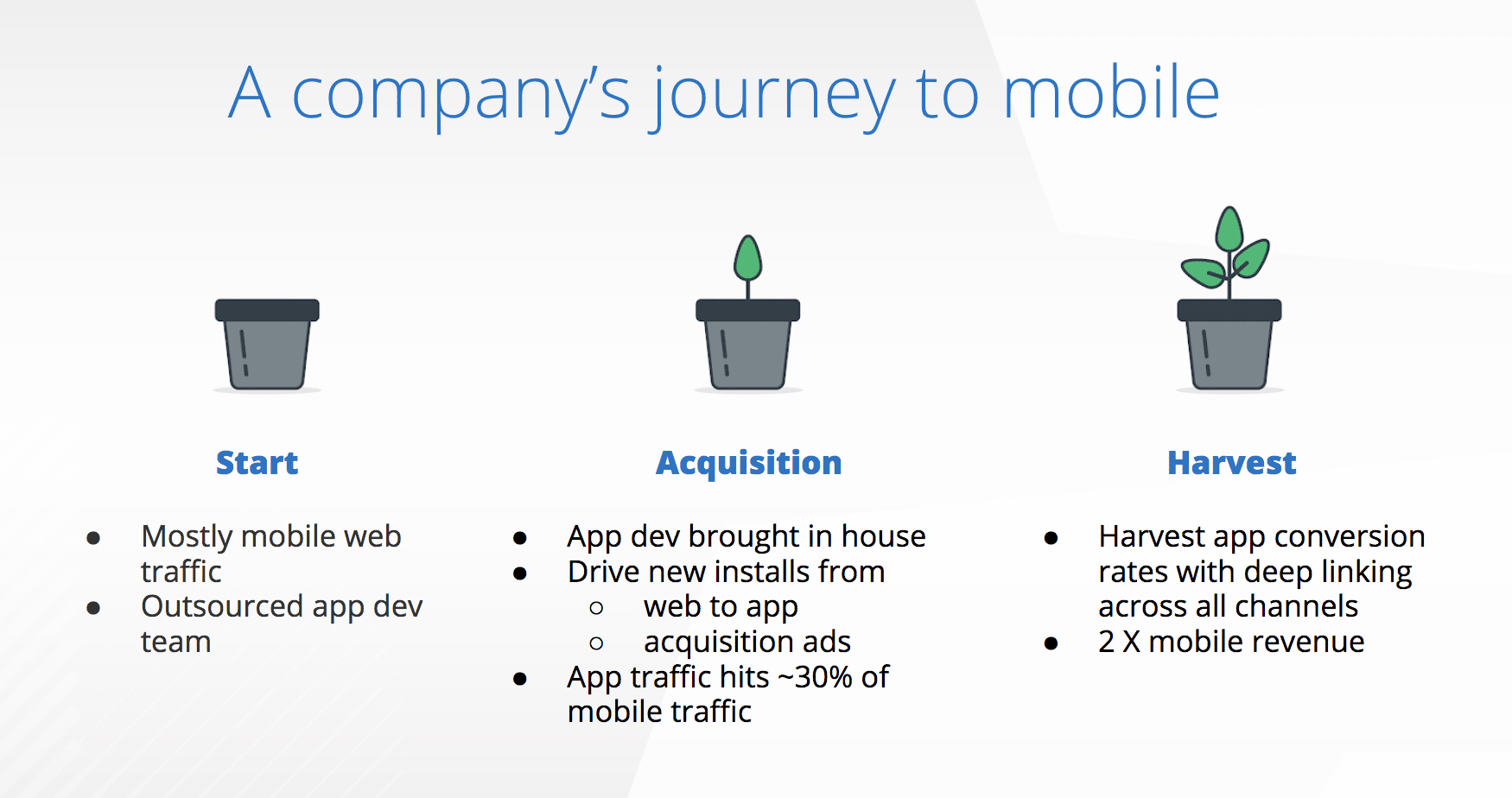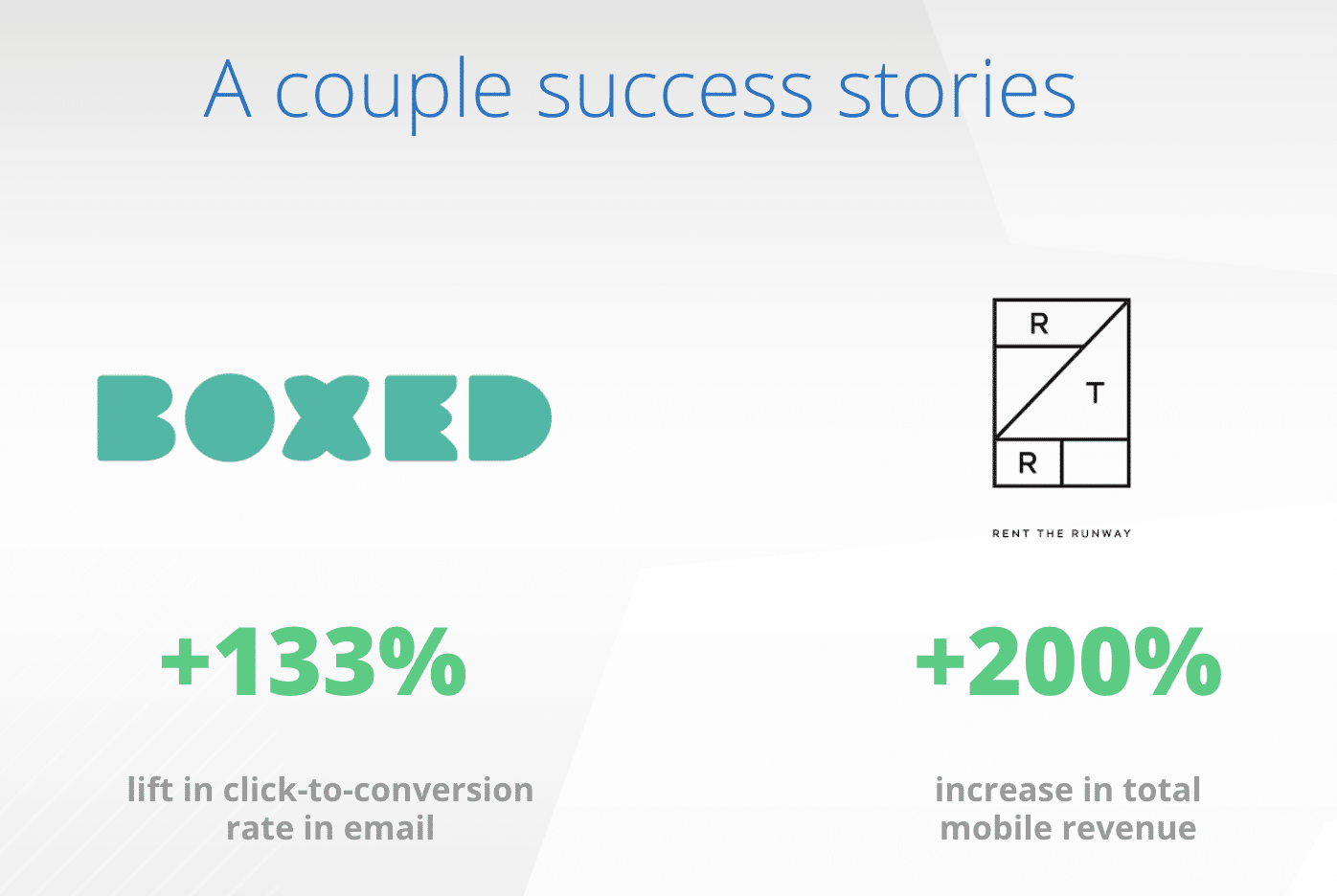Mobile growth is challenging for even the best brands out there today. Web marketing was always challenging, but that problem became much more complex with the introduction of mobile – and the increasing share of time spent on mobile rather than desktop.
Source: ComScore’s 2017 U.S. Cross-Platform Future in Focus Report
As users became more reliant on mobile, platform fragmentation made it difficult for marketers to track campaign performance across devices, and provide a consistent experience on mobile.
And that’s a challenge they are still struggling with today. Earlier this year, the 2018 CMO Survey found that mobile marketing spend will increase by 93% in the next three years, a number that will put mobile marketing spend ahead of traditional marketing channels—including television.
With this influx of spending, the mobile marketing space is about to get even more crowded and chaotic. The companies that pivot to a mobile-first approach most quickly will find themselves ahead of the competition.
At the 2018 RISE Conference in Hong Kong, the largest tech conference in Asia, Branch co-founder and Head of Marketing Mada Seghete delivered a mobile-first call to action that explored the three key phases of mobile growth that executives and their marketing teams can expect.
Stage One: Start
During the first stage of mobile growth, companies often simply decide to enter mobile. They build an app.
At this level, the company typically isn’t building the app in-house—but they are beginning to understand the importance of optimizing and refining existing mobile assets and properties.
This stage is really when a company sets up the foundation for mobile growth – and in the next stage, it begins to build.
Typically a company does not see significant ROI from their mobile app presence.
Stage Two: Acquisition
After building and optimizing mobile apps, brands begin to focus on acquiring mobile app users. Usually at this stage, brands begin to notice that app users are more engaged as their web users.
At this stage, brands also typically start driving more and more users to their app, to leverage the enhanced engagement that unfolds in-app.
Unfortunately it’s not cheap to acquire app users—and it doesn’t immediately pay off. eMarketer found it costs about $4.12 to get a user to install an app — and it costs $64.96 to acquire a user who will ultimately make a purchase in-app.
Typically a company sees very limited ROI from their acquisition phase.
Since Stage One and Stage Two don’t often directly lead to revenue, brands often just go back to focusing on the web, and give up their quest for mobile growth.
But there’s a good reason not to give up — because Stage Three is the payoff.
Stage Three: Harvest
In Stage Three, all of the rewards of optimization and acquisition begin to pay off. With the website, mobile web, and mobile app all optimized and working together through deep linking, brands are able to execute and attribute seamless cross-platform experiences.
They’re also able to focus on re-engaging the users they’ve acquired on different platforms to drive conversions. At this stage, the investment and hard work of building mobile can turn into explosive growth.
Typically, this stage is where a company sees the most revenue.
Let’s take a look at two companies that made it to the third stage: Boxed and Rent The Runway. After building their mobile app and acquiring users, both brands saw incredible results during Stage Three.
Numbers like these prove that Stage Three is the holy grail of mobile growth—and it should be the goal for every marketing team.
To find out even more about how mobile leaders like Airbnb, Pinterest, Slack, Tinder, Starbucks, Yelp, and Ticketmaster are doubling their conversions with a mobile-first, people-based approach to attribution, check out Mada’s full RISE talk here, or stay tuned below.






















